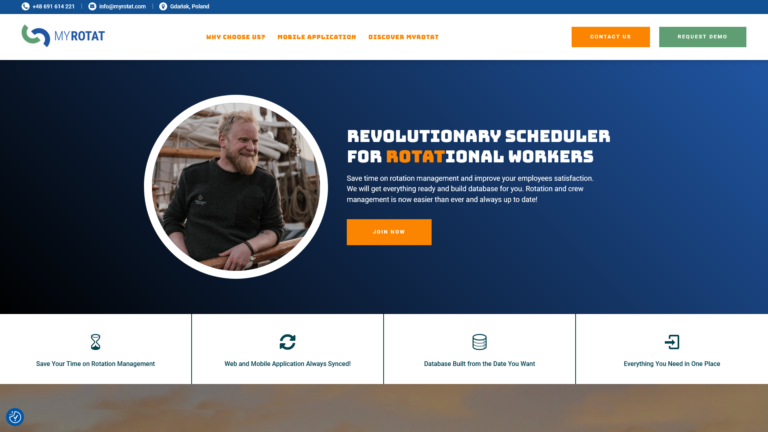When setting up or running your business you have most probably been told numerous times that a business plan is one of its most important aspects. At the same time, we know that you probably get a headache from the mere thought of it, because it associates with big document with multiple pages, unreadable schemas and complicated taxonomy. As much as it is vital to your business success, it is also time-consuming and tends to be simply daunting. But what if we told you there is a way to simplify it significantly and make it readable by any team member? Today, we will show you how, by introducing Lean Canvas and Business Model Canvas.
What is Business Model Canvas?
Business Model Canvas (BMC) is the equivalent of a business plan in modern companies. Instead of analyzing and breaking down all elements of a business plan, Business Model Canvas focuses on the users and their interests. After all, analyzing funding and ways to get it should come after we establish whether the idea we have will indeed be successful. Thanks to Business Model Canvas, your company gets a simplified model that allows you to focus on the most crucial parts and their analysis.
Eample Business Model Canvas
Below you can see an example Business Model Canvas for software house – like Sailing Byte. Of course, it is simplified, but I placed this sample so you can easier understand description of those points
You can also see that I added points to each card – this is for you to easier determine order in which canvas should be filled. For this example I used Whimsical, but for such concept drawing there are other great tools such as Miro or Diagrams.net
Download Free Example Template Business Model Canvas PDF file
Download Free Example Template Business Model Canvas DOCX file
9 elements of Business Model Canvas
The idea of Business Model Canvas derives from the business model itself. Its main aim is to analyze the elements needed to achieve profitability of the business or idea. Thanks to Business Model Canvas you can have all the structural elements of a business model in one diagram. There are nine structural elements of a business model that Business Model Canvas distinguishes:
- Customer segments – the target customers of your products or service
- Value proposition – the practical relevance for the users
- Channels – the channels through which you establish and maintain your customer relationship
- Customer relationships – the relationship type you establish and maintain with your customers
- Revenue streams – models you use to generate income, such as subscription or direct sales
- Key resources – the assets needed to run your business
- Key activities – activities undertaken to achieve profitability
- Key partners – the entities or individuals that are involved in your business activities
- Cost structure – all business expenses, such as rent, salaries, etc
- Legend – this is not official element of BMC, but my addition that I often find useful
How to create a Business Model Canvas?
To create an appropriate Business Model Canvas, you should identify all elements of the canvas that apply to your business. The recommended steps to make the process sequential and logical should be as follows:
Step #1: Choose customer segments
Look at your customers’ needs, channels of access, types of relationships or offerings, and other features. Then group them accordingly. This will bring order to your users’ understanding and help you come up with different ideas for other sections.
Step #2: Identify your value proposition
Once you specify the segments of customers, think about the benefits and features that will satisfy their needs. Take into account such elements as:
- Performance- quality and speed;
- Novelty- are your products and services innovative?
- Design- how does your design stand out among the competition?
- Customization- are your services and products customizable?
- Price- determine the price range (depending on the business model).
Step #3: Choose channels
Channels are present in various stages (such as the Awareness, Consideration and Decision) of the customer journey and can be of various natures too (own or partners’, direct or indirect).
Step #4: Establish the relationship
The value can only be delivered and communicated to the customers if you establish a relationship with them. Ensure you establish how to acquire new users and which relationships will be beneficial for the solution delivered by your business.
Step #5: Identify revenue sources
Revenue can be generated in the following ways:
- Direct sales – one-time payment for the company’s product or service;
- Subscription – a recurring payment for the company’s products or services;
- Pay-per-use – similar to a subscription; the customer pays for the services or products regularly. However, the price paid depends on the use of said products or services.
Step #6: Identify key resources
Resources are all physical, intellectual, human and financial components that you need to conduct the activity according to your business model.
Step #7: Determine core activities
All the tasks you need to carry out within a business model that will provide your customers with a solution to their problems.
Step #8: Choose key partners
These are all individuals and enterprises, such as suppliers or stakeholders, you need to carry out the business model.
Step #9: Determine and differentiate the costs
In this state, divide your operating costs into Fixed Costs and Variable Costs. Additionally, include the cost minimization and factors that bring the maximum possible value.
Step #10: Add any useful elements
While BMC is a “complete” solution, you might find useful to add some blocks. In my case I am often adding “Legend”. One thing you should worry about when adding new elements is to not overdue it – if you add too many elements, canvas will become unreadable. I would say a rule-of-thumb is you should always be able to print it on A4 with readable text. If you need more elements – maybe it’s a good time to create separate document describing Canvas sections in detail.
What are the advantages of Business Model Canvas?
- Visualizing a Business Model: The BMC offers a one-page snapshot of the entire business model, making it easier to see relationships between different components (such as customers, value propositions, and revenue streams) at a glance.
- Clarifying Value Proposition: It helps businesses focus on what they offer to customers (value propositions) and how these offerings solve problems or meet customer needs.
- Identifying Key Components: The canvas breaks down the business into nine building blocks—key activities, partners, resources, customer segments, channels, cost structures, revenue streams, and customer relationships—allowing for a detailed examination of each.
- Supporting Strategic Decision-Making: By laying out all critical components, it aids decision-makers in identifying strengths, weaknesses, gaps, or areas for improvement within the business model.
- Facilitating Communication and Collaboration: Since the BMC is simple and visual, it’s an effective communication tool that ensures all stakeholders (internal and external) share a common understanding of the business model.
- Enabling Iteration and Innovation: The BMC is designed to be flexible, encouraging continuous refinement and iteration of a business model as market conditions, customer needs, or resources change.
- Supporting New Ventures and Startups: It is especially helpful for startups and new ventures to map out their strategy and experiment with different business model variations before committing to a plan.
What is Lean Startup Canvas?
If you wanted to transform Business Model Canvas to get a more problem-solution-oriented analysis, you would get a lean canvas. It is exactly what Ash Maurya, its inventor, did. Thanks to Lean Canvas, you can focus on the viability and practicality of your idea by replacing some structural elements in BMC.
Example Lean Canvas
I took Business Lean Canvas model and adjusted it so schema represents now Lean Canvas.
Download Free Example Template Lean Canvas PDF file
Download Free Example Template Lean Canvas DOCX file
Elements of Lean Canvas
To make Lean Canvass, you need to replace few items of Business Model Canvas:
- Replace Key partners with Problems
- Replace Key activities with Solutions
- Replace Key resources with Key metrics
- Replace Customer relationships with Unfair advantage.
As a result, we get a model that operates a more straightforward language and shifts the application vector, making it more practical. This results in creating five core elements, that focuses on customer segments, value proposition, channels, customer relationships, key partners and revenue streams. When we analyze those five components deeper, we can get greater visibility into the viability of our business idea.
How to create Lean Canvas?
Procedure is similar to Business Model Canvas. Essentially, you go step by step and fill in details of each element. Creating a Lean Canvas is a streamlined approach to business modeling, especially suited for startups and entrepreneurs focusing on problem-solving and fast iteration. It’s a one-page document that highlights the most critical aspects of a business idea. Here’s a step-by-step guide to creating a Lean Canvas:
Step #1: Identify the Problem
Identify the top 1–3 problems your target customers face. List the most significant problems that your business is trying to solve. These should be specific and well-defined problems that are important to your target audience.
Step #2: Customer Segments
Define your target audience or key customer segments. Identify who your ideal customers are and group them into distinct segments. This could be based on demographics, behaviors, or any defining characteristic. Focus on early adopters—customers who are most likely to use your product first.
Step #3: Unique Value Proposition (UVP)
Clarify the single, compelling message that explains why your product or service is different and worth attention. Write a clear statement about what makes your solution unique and why customers should choose you. Make it concise and focused on the benefits your customers care about.
Step #4: Solution
Outline how your product or service solves the problem(s) you identified. Provide an overview of the top features or offerings of your solution. Keep it simple—focus on the core elements of your solution rather than getting bogged down by every feature.
Step #5: Channels
Identify how you will reach your target customers. List the ways you plan to get your product or service in front of your customer segments (e.g., online marketing, partnerships, direct sales). Consider both inbound (organic) and outbound (paid) strategies for customer acquisition.
Step #6: Revenue Streams
Determine how your business will generate money. Specify your pricing strategy, sales channels, and potential revenue models (e.g., subscriptions, one-time purchases, freemium). Make sure your revenue model aligns with your customer segments and pricing expectations.
Step #7: Cost Structure
Outline the costs associated with running your business. List both fixed and variable costs (e.g., development, marketing, operations, personnel). Focus on the key expenses required to launch and operate your business effectively.
Step #8: Key Metrics
Identify the key performance indicators (KPIs) that will help you measure success. Choose metrics that track the performance of your solution, such as customer acquisition cost, lifetime value, or user engagement. Prioritize actionable metrics that directly reflect customer behavior and business growth. You can learn more about KPIs and using them in SaaS business here.
Step #9: Unfair Advantage
Define what sets you apart from competitors that cannot be easily copied or acquired. Describe any proprietary technology, unique expertise, network effects, or other advantages you have. This is the hardest section to fill in but also the most critical to long-term success. Focus on what will give you a lasting edge over competitors.
Step #10: Add any useful elements
Same as in BMC, I am often adding “Legend”. Other not mentioned “core” elements are: Existing alternatives (this is NOT just competitors, but any other solution that your end-user can use) and Early Adopters (this are users who are most likely to use your service). Agan reminder: do not overdue it. Those are sometimes mentioned as basic core elements, but if they clutter your view too much – get rid of them.
Always remember: it is tool that serves your purposes, not you that serve tool.
What are the advantages of Lean Canvas?
Lean Canvas is not only about the smart and intuitive graphic layout. It has several other functions that bring the user closer to the identification of a successful business strategy.
- Help in staying lean. In lean product management, fast development of an idea and speed are of the essence. Lean Canvas not only follows lean management principles but also helps in their fulfilment. It is best reflected in the simplicity and ease with which you can complete the canvas. It also works according to the principles of changing requirements and updates. That is why you can choose not to finalize the document in case new data occurs.
- Customer orientation. Customer focus is another objective of the Lean Canvas model. Through better customer understanding you can implement desired elements and improve the already existing ones based on your users’ preferences. Lean Canvas examines different customer segments and therefore covers a broader spectrum of potential product users.
- Time-to-market. Lean startup is characterized by a quick transition of an idea into a product as opposed to the standard methods. Therefore, a quick time-to-market (time between the idea and product release to the public) is one of the main focuses of the Lean Canvas model.
- Viable metrics orientation. Lean Canvas believes that the viable metrics are more worth analyzing than the ones that give a deceptive picture of the offer. The most important startup metrics according to Lean Canvas are minimum success criteria, such as the number of referrals, subscribers, the conversion rate, etc.
- Simplicity and Focus. The Lean Canvas condenses complex business planning into a one-page visual format, making it easier to focus on the essential elements of your business. It forces you to distill your business idea into its core components, avoiding unnecessary details.
- Fast and Efficient. It can be filled out quickly compared to traditional business plans, allowing for faster iteration and feedback. Entrepreneurs can easily modify and adapt their business model as they gather new insights, making it perfect for dynamic, fast-changing environments.
- Encourages Innovation. By focusing on the problem, solution, and value proposition, Lean Canvas promotes creativity and innovation in solving customer pain points. It helps entrepreneurs think outside the box and come up with unique, viable solutions that differentiate their business from competitors.
- Promotes Lean Thinking. Lean Canvas aligns with the Lean Startup methodology, encouraging experimentation, quick feedback, and minimizing waste (such as unnecessary features or marketing strategies). This leads to more efficient use of resources, helping businesses test assumptions without excessive costs.
- Helps Prioritize. It provides a clear overview of the most critical elements of the business, helping founders prioritize key activities like customer acquisition, revenue models, and problem-solving. Entrepreneurs can focus on what matters most and avoid being distracted by less impactful tasks.
- Encourages Continuous Iteration. It’s designed to be updated regularly as new insights are gained, promoting a mindset of continuous improvement. This adaptability makes it easier to pivot or adjust strategies based on real-world data, ensuring the business stays relevant.
How does Lean Canvas help in Agile?
Lean Canvas is a perfect tool for teams that work in Agile. This business plan tool lets its users break down ideas into core elements that fit into a handy one-page format. Thanks to its simplicity, Lean Canvas are a great alternative to elaborate and complex traditional business plans. It works well for Lean Startups. With the Agile technique where speed and appropriate prioritization are of great importance, the ability to quickly identify and validate the core assumptions of the business model is of great importance. Lean Canvas also supports the idea of collaboration as they are designed to be completed by the team. All these elements make Lean Canvas one of the most needed tools Agile teams can use during their product development.
Especially in Scrum teams which should consist of professionals, it is important for each team member to understand (at least in general) business perspective of the product. Some tools that help in this are Product Vision and Sprint Goals, but Lean Canvass is a great tool that helps with it even more, making Scrum teams more efficient. This is also a great tool on operational level, because it can help COO/CEO to coordinate efforts between departments – for any C-Level manager in company.
Should I use Business Model Canvas or Lean Canvas?
It is worth noting that both Business Model Canvas and Lean Canvas have “recommended order” of filling. While it can help to get you started, I woundn’t worry about it because of two reasons:
- You can just skip and get back to missing element. There’s no reason to block yourself from starting, and some latter elements (which you can know) may help you to name those you skipped.
- Business changes, your understanding on customer and their needs changes, your competition changes – everything changes. So it’s a great idea to revisit model from time to time, rethink it and adjust it.
Thanks to the shift, Lean Canvas is a perfect tool for startups, whereas Business Model Canvas works great for already existing enterprises. Lean Canvas emphasizes the customer segment instead of customer interrelation and channels. Thanks to its analysis of unfair advantage to bring a desirable product into the market, startups can take a clear problem-solution approach. Although BMC is a useful tool, it does a better job in the case of businesses which need to have a clear strategy based on a thorough analysis of strengths and weaknesses.
It is also worth noting, that both Busienss Model Canvas and Lean Canvas are great tools to help with elevator pitch. The idea of elevator pitch is that you should be able to introduce and sell yourself (or in our case – your business) within 30 seconds – average elevator ride time. Single A4 business model card is a great way to present all key business elements both either to potential founder, venture capital, or (in some cases) to end-user.
So essentially, if you are running a startup and look for modern tools – I would suggest using Lean Canvas. While if you are working in exesting company and you need a better tool for presenting business purpose and existence reason while adding a bit of agility – I would go with Business Model Canvas.
Business Model Canvas and Lean Canvas are solutions that simplify many processes connected to business planning. However, it may still require further guidance to implement these models within your business. There is no need to struggle on your own, though. If you do not know which model is right for your business or have more questions regarding the business model implementation, Sailing Byte is here to help. We cooperate with many clients who have already successfully implemented appropriate business canvas models within their companies. Book a call to discuss how Business Model Canvas can help your business succeed.




